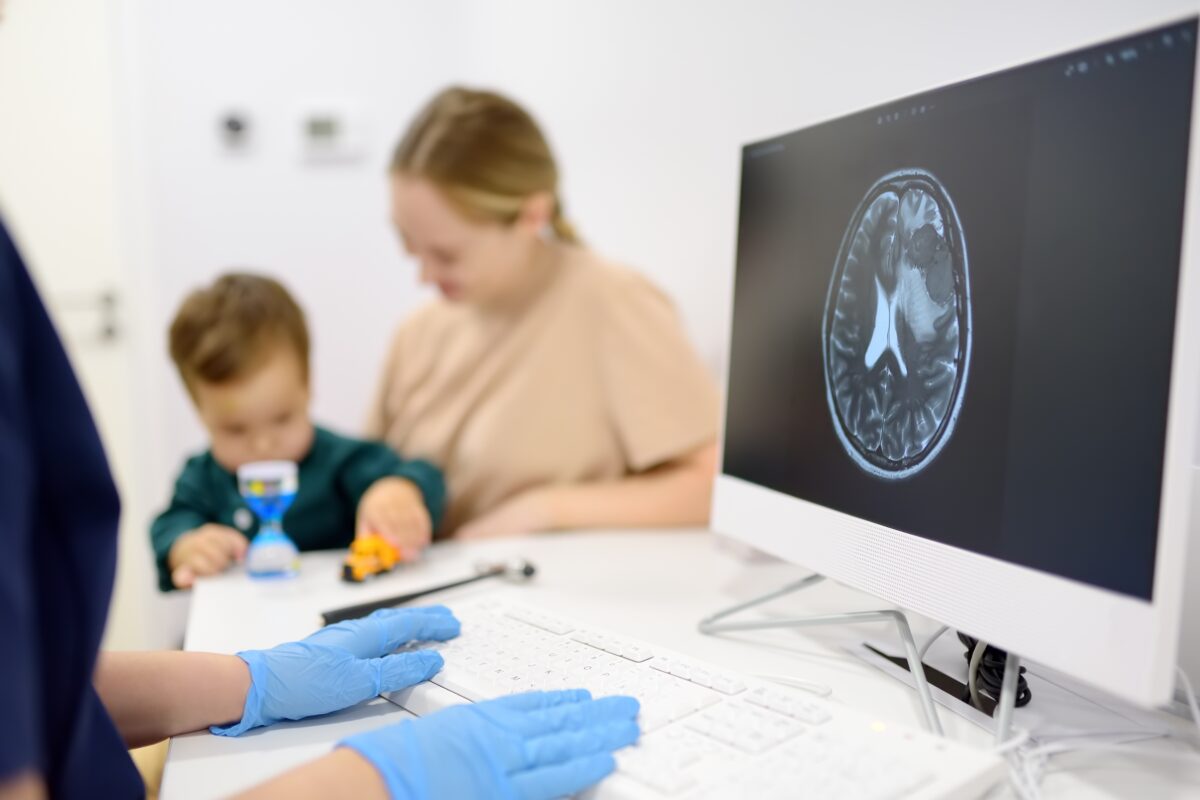
Transforming Early Diagnosis: New Model Predicts Brain Age in Infants
A new study introduces a cutting-edge brain age prediction model for children under three. By leveraging MRI data and deep learning, researchers have developed a model capable of detecting early brain developmental delays. This breakthrough offers significant potential for diagnosing conditions like autism and ADHD earlier than ever before.

Note: This article is intended for general information and educational purposes. It summarizes scientific research in accessible language for a broad audience and is not an official scientific press release.
Inside the Lab: Unveiling the Advanced Methods Behind Pediatric Brain Age Prediction
Published in Brain Structure and Function, the study focuses on the importance of child-specific brain age models. The youngest age group, children under three, had previously been overlooked. Most existing models are designed for adults or use broad age ranges, leading to inaccurate predictions for infants and toddlers.
Researchers collected T1-weighted MRI scans from 658 healthy children between 0 and 3 years of age. They developed a deep residual network—a type of deep learning algorithm. This algorithm was trained to predict brain age using minimal data preprocessing, making it unique. Unlike earlier models, it works directly with raw 3D MRI data, improving both speed and accuracy.
The team also applied their model to children with health conditions such as low birth weight, prematurity, autism spectrum disorder (ASD), and attention deficit hyperactivity disorder (ADHD). These applications provided deeper insight into how early-life health challenges affect brain development.
How This Study Stands on the Shoulders of Previous Neurological Discoveries
Previous models focused primarily on adults. Many studies used deep learning for brain age prediction. However, their focus was on adult populations or broader age groups, which made them less effective for infants. Young children’s brains develop rapidly, and generalized models don’t capture these changes accurately.
While some research attempted to focus on younger children, those studies often had small sample sizes. They also required extensive MRI preprocessing, limiting their practical application. Additionally, brain templates used in previous MRI studies were usually based on adult data, making them less reliable for young children.
The current study overcomes many of these limitations. By focusing exclusively on children under three and using raw MRI data, the researchers have created a tool that could revolutionize pediatric neurological care.
What the Data Says About Infant Brains
This study led to several important discoveries:
- Features of brain development: The study emphasizes that brain age does not always correspond to a child’s biological age.
- Accurate Brain Age Prediction: The deep learning model achieved a 91% correlation between predicted brain age and actual chronological age. This high accuracy is crucial for identifying subtle developmental delays in the brain.
- Minimal Data Preprocessing: Unlike previous models, which required extensive data cleaning, this model works directly with raw 3D MRI data. This speeds up the process and reduces errors that come from preprocessing.
- Impact of Low Birth Weight: Children born with extremely low birth weight (under 1,000 grams) showed delayed brain development. This finding suggests these children might experience long-term cognitive and neurological issues.
- ADHD and Accelerated Brain Aging: The study found that children with ADHD show signs of accelerated brain aging. This is a key insight, suggesting that ADHD may have roots in early brain development.
- Autism and Brain Age: Interestingly, the study did not find a significant difference in brain age predictions between children with autism and healthy controls. However, the researchers caution that further study is needed.
- Premature Birth and Brain Development: Premature children showed signs of accelerated brain aging compared to full-term infants. This suggests that some aspects of brain development may progress faster in children born prematurely.
- White Matter Growth: The researchers discovered that white matter, which grows faster than gray matter in early childhood, plays a crucial role in predicting brain age. This finding could shift future research towards studying white matter’s importance in brain development.
Future Implications for Healthcare
This child-specific brain age prediction model has immense potential to improve the early diagnosis of developmental delays. The first years of brain development are crucial, as various parts of the brain, such as the prefrontal cortex and hippocampus, are instrumental in these cognitive functions. Detecting delays early can lead to more effective interventions and improved outcomes. With this model, healthcare providers could catch conditions like ADHD or developmental delays at a much earlier stage, facilitating timely support and resources that can significantly enhance a child’s developmental trajectory.
The model also offers new possibilities for tracking the brain development of children born with health issues such as low birth weight or prematurity. Doctors can use brain age predictions as a benchmark to see whether these children are developing normally or need extra care.
A Game-Changer for Early Diagnosis
From a scientific standpoint, this research marks a major leap forward in how we understand early brain development. Using deep learning with raw MRI data, the study sets a new standard for neuroimaging. Its potential applications are wide-reaching. While the current study focuses on infants and toddlers, this methodology could eventually be adapted for older children and adults.
The study also highlights the importance of white matter in early childhood brain development. Understanding the role of white matter in brain aging could lead to new approaches in treating developmental disorders.
Next Steps for Research
While this study is a significant achievement, the researchers acknowledge that more work is necessary. The sample sizes for certain conditions, such as autism and ADHD, were small. Future research will need to study larger, more diverse groups to validate the findings.
Additionally, while the model performed well with high-quality MRI data, it may need further refinement for situations where data quality is lower.
Nevertheless, this study represents an exciting advancement in pediatric neuroscience. The potential for integrating brain age prediction into routine healthcare is real. It could provide parents and doctors with the tools they need to ensure children get the best possible start in life.
Conclusion
This research lays the groundwork for future advancements in early childhood healthcare and neuroscience. By focusing on the youngest and most vulnerable brains, this brain age prediction model could change the way we diagnose and treat developmental conditions in children. With further development, this model could become a vital tool in improving long-term outcomes for children around the world.
The information in this article is provided for informational purposes only and is not medical advice. For medical advice, please consult your doctor.













